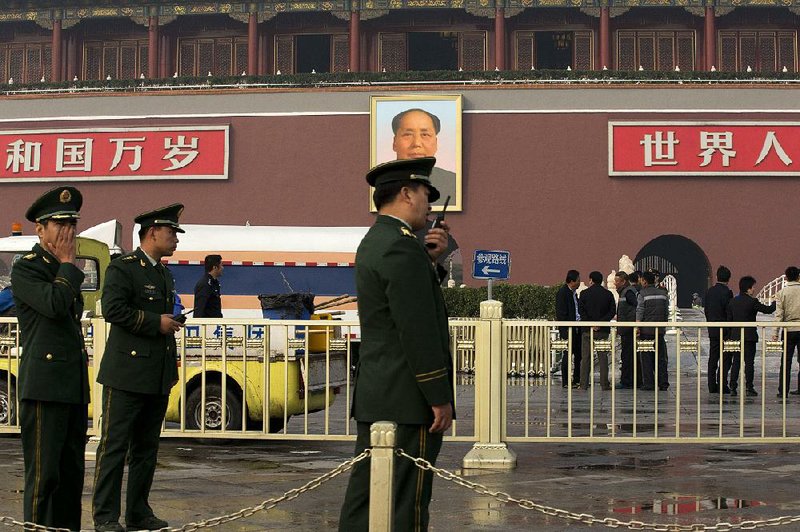BEIJING - A sport utility vehicle plowed through a crowd in front of Beijing’s Forbidden City before crashing and catching fire Monday, killing the three occupants and two tourists and injuring 38 visitors and security officers, police said.
The dead included a female traveler from the Philippines, according to a statement on the Beijing police’s microblog and a Philippine official. Police said three other Filipinos and a Japanese man were among the injured, but gave no details about their condition.
Authorities were scouring Beijing today for suspects from a region of northwestern China with a large Muslim population.
They told hotels to look out for two men from the towns of Pichan and Lukchun whose names identified them as Uighurs, according to a notice put out by police late Monday.
The Uighurs, an ethnic Muslim group from China’s Xinjiang region, have carried out a long campaign for greater autonomy and have been implicated in numerous attacks against authorities in Xinjiang.
Few other details were forthcoming from the official news outlets. Authorities on Monday quickly erected screens to hide the aftermath and cleaned up the scene, while images of the crash were taken down from the Internet.
The injured were among the crowds in front of Tiananmen Gate, where a large portrait of Mao Zedong hangs near the southern entrance to the former imperial palace.
The vehicle burst into flames after crashing into a guardrail for one of the ancient stone bridges leading to the gate, police said.
The statement said the driver veered inside of a barrier separating a crowded sidewalk from busy Chang’an Avenue and then drove along the walkway to Tiananmen Gate, which stands across the avenue from the sprawling Tiananmen Square.
Chang’an Avenue was closed as police and rescue services converged on the area, but the police statement said traffic was restored just over an hour later.
Any occurrence in the area is considered sensitive because the square was the focus of a 1989 pro-democracy movement that was violently suppressed by the military. The square is still heavily policed to guard against political protests, which occasionally happen on sensitive dates.
The wreck had every appearance of being deliberate, since the driver apparently jumped a curb and traveled about 400 yards to the spot where the car was said to have caught fire while avoiding trees, streetlights and at least one security checkpoint.
Photos of the scene that briefly circulated on the Internet showed a vehicle emitting thick smoke at the gate. Injured people, including a young girl, lay on the ground, many of them bleeding heavily.
Philippine Department of Foreign Affairs spokesman Raul Hernandez said their information indicated that the dead Filipino woman and the three injured Filipinos - two women and a man - were tourists.
Police said the other tourist killed was a man from the southern province of Guangdong. They didn’t say how the three inside the vehicle died.
Attendants and nearby concession-stand vendors who were asked about the crash all said they were not clear on what happened. Such employees are generally understood to be part-time police informants.
Just west of the square lies the Great Hall of the People, the seat of China’s parliament, while many of China’s top leaders live and work just a few hundred yards away in the tightly guarded Zhongnanhai compound.
Information for this article was contributed by Jim Gomez of The Associated Press and by Barbara Demick of the Los Angeles Times.
Front Section, Pages 6 on 10/29/2013
